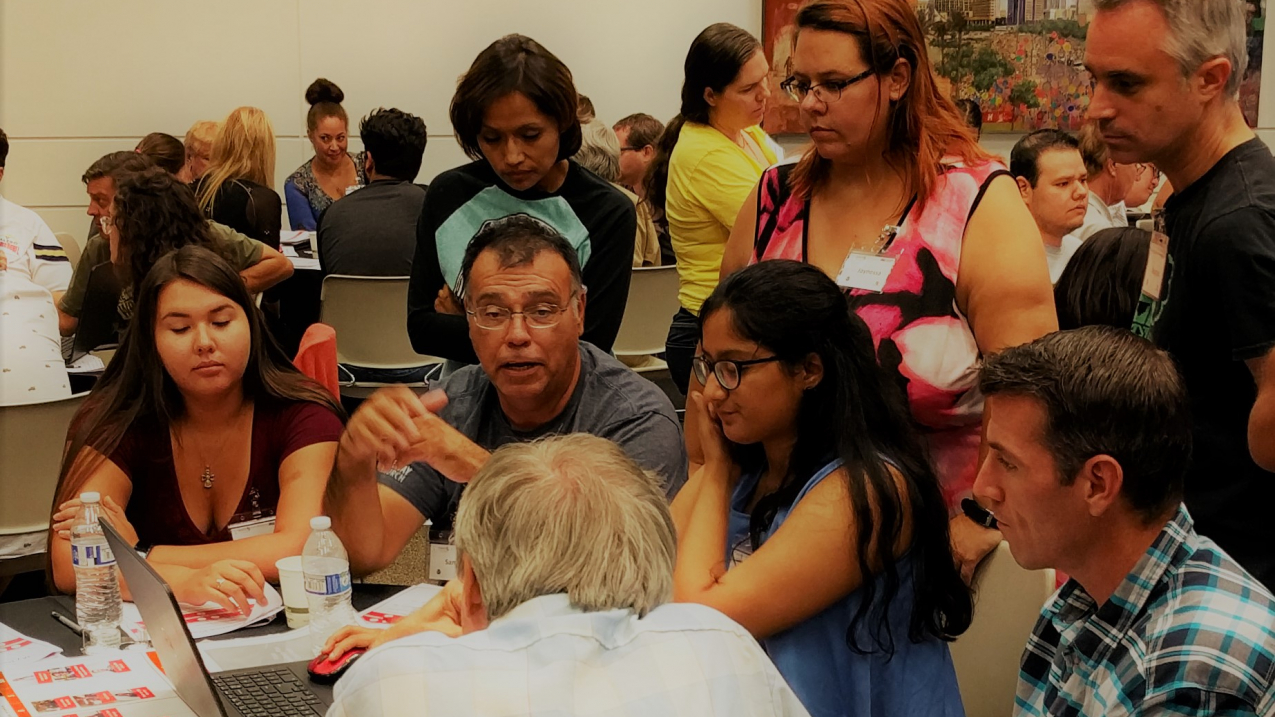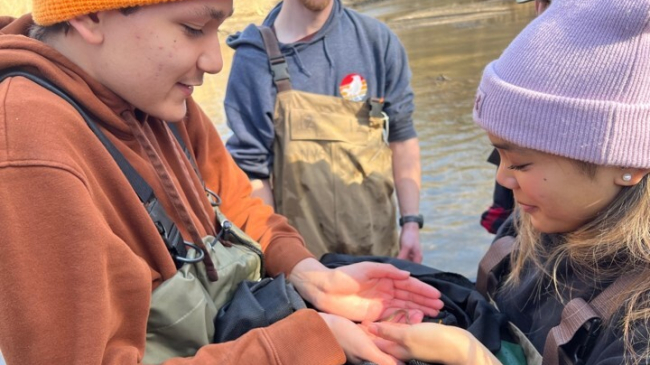In the southwest United States, drought and heat are commonplace. However, the severity and frequency of both have been increasing, underscoring the need for communities to adapt to these conditions. But how will communities prepare for future extremes? With support from NOAA’s Environmental Literacy Program, Arizona State University has been raising awareness and finding solutions through public forums that put community members in the roles of decision makers.

Arizona State University, an Environmental Literacy Program grantee, engages Phoenix, Arizona, residents in a public forum exploring how communities might adapt to extreme heat and drought. (Image credit: Arizona State University)
NOAA’s Environmental Literacy Program builds on NOAA’s understanding of extreme weather and other environmental hazards and helps Arizona’s communities and others around the nation build the environmental literacy necessary to become more resilient to the hazards that they face. Arizona State University’s Consortium for Science, Policy and Outcomes (CSPO), one of the program’s Environmental Literacy Grant award recipients, created “Science Center Public Forums” around four major environmental hazards: extreme heat, drought, extreme precipitation, and sea level rise. A recent public forum, hosted by the Arizona Science Center, brought a group of Phoenix-area residents together to discuss community resilience strategies to address some of these hazards.
Participants learned about the hazards by using NOAA’s products focused on heat and drought. Then, they worked through a variety of scenarios and “role played” as different stakeholders in fictional towns to build understanding of different perspectives that should be considered for possible resilience strategies. “The goal is to create replicable capacities at science museums in cities across the U.S. to help citizens, planners and experts to openly discuss science-informed solutions,” explained Mahmud Farooque, Associate Director at the CSPO.
Phoenix’s diverse communities were represented by sixty participants, selected from over 300 applicants. At the event’s conclusion, participants made recommendations for increasing community resilience to extreme heat and drought. These recommendations will be shared with state and local government officials and other stakeholders. During the forum, participants had the opportunity to hear about their city’s resiliency from Mark Hartman, Phoenix’s Chief Sustainability Officer, and to share with him their thoughts on Phoenix’s plans.
The forum increased participants’ understanding and interest in these issues. Pre- and post-forum surveys showed that the number of participants who strongly agreed with the statement, “it is important for my local community to develop and implement a resilience plan,” increased from 42% to 84%. Similarly, the percentage of participants who reported that they knew “a lot about the climate-related hazards that could affect their local community” increased from 18% to 65%.
This event exemplifies efforts to build resilience through education that are underway in 13 projects throughout the nation, supported by NOAA’s Environmental Literacy Program. To date, these projects have served more than 90 communities in 24 states.
This story was originally published as part of the 2017 NOAA Education Accomplishments Report.



